Learn all the tips for how to use a mandoline slicer, the professional tool that makes cooking fast and fun. Cut and slice ingredients easily. From protecting your hands, and thickness of slicing, to different styles of mandolines, I have all the information!
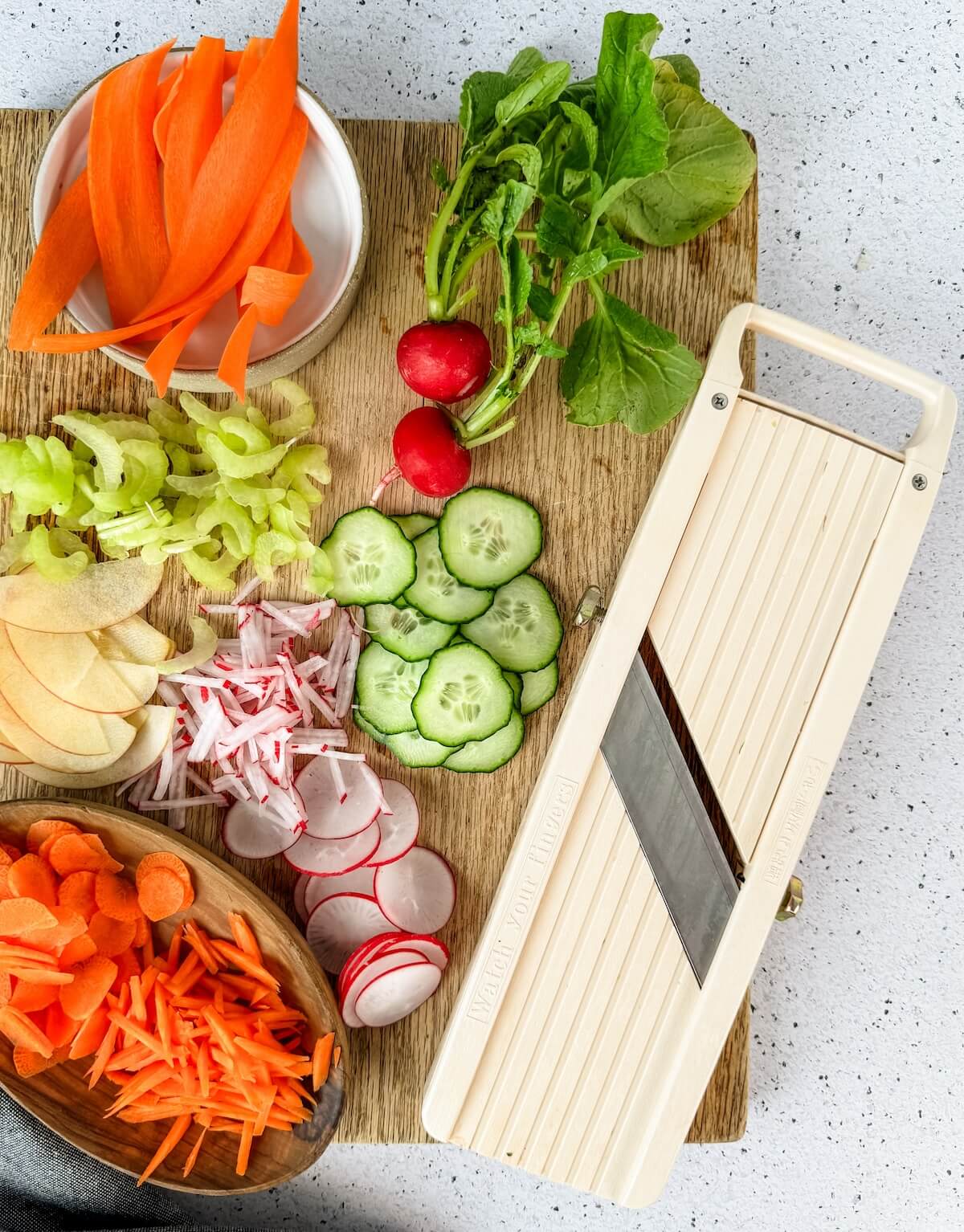
Jump to:
Using a mandoline slicer might seem intimidating, but it's much more simple than you think! It makes quick work of a potato gratin, or slaw salad, and is so much easier than doing all the slicing by hand.
As a professional food editor, trained chef, and recipe developer, I've been in test kitchens, and professional kitchens for years. A mandoline is a secret weapon for making beautiful food simply!
What is a mandolin?
It's not a musical instrument. A mandolin slicer (you also see it spelled as “mandoline”) is a kitchen tool with a flat surface fitted with a sharp blade. It is used for cutting vegetables and fruit into thin, uniform slices.
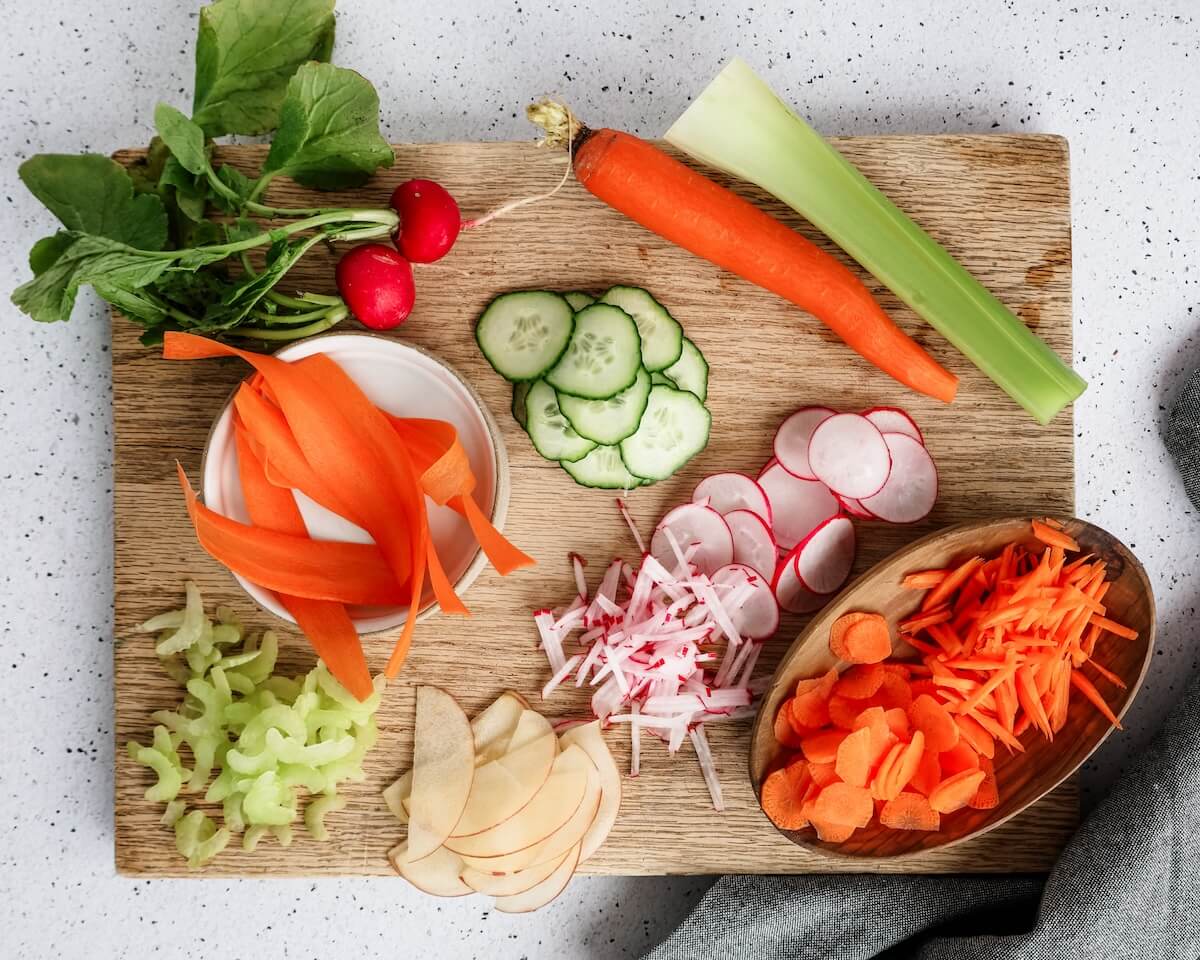
How do you spell mandoline?
Mandolin or mandoline? Whoa! Did you notice? Sometimes a mandoline slicer is spelled "mandolin," yes, like the instrument.
Before we get into how to use the slicer, not the musical instrument, I wanted to let you know you'll see it spelled both ways. In the US it is spelled with an "e" at the end, but in the UK you'll see it spelled "mandolin."
In this post I'll refer to it both ways. Why? Because, if people are searching for specific queries, I'll want to make sure they land here, where I have all the information!!

Why use a mandoline slicer?
Mandolines are much more convenient that just using a knife. You can get even, precision cuts over and over again, in a timely and efficient manner.
You'd need to be a pretty skilled chef to get the consistency with your knife that you can get with a mandoline.
Mandolin origins
The mandolin has quite a history! The mandolin or “mandoline” got its name from Italian tradition. When using a mandoline slicer, the hand movement needed is similar to the hand movement used when playing a mandolin musical instrument (which is a small stringed instrument in the lute family).
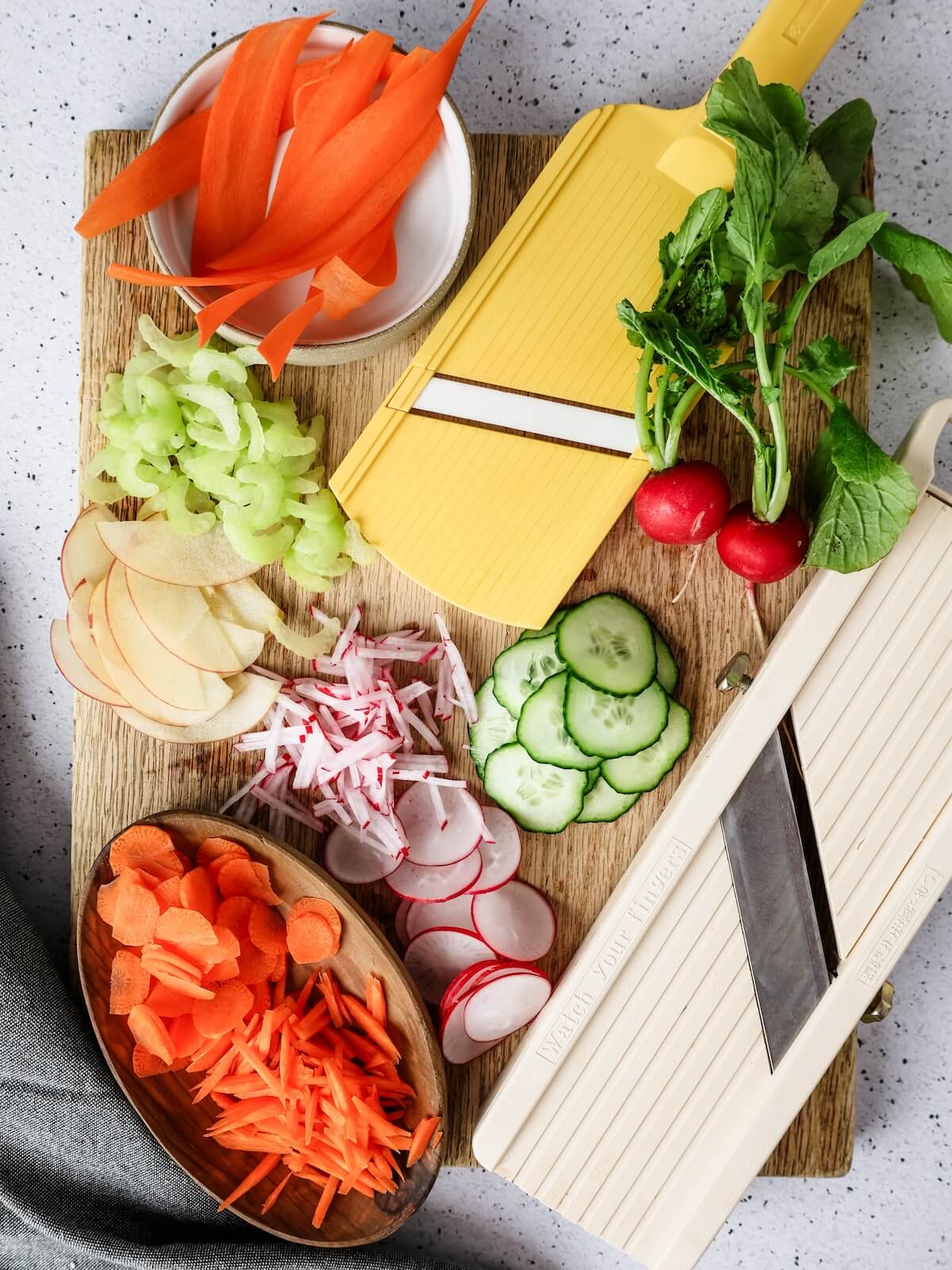
French and Japanese style
There are two kinds of mandolines: French mandoline and Japanese slicers. They both perform the same function, but they are used differently.
French style is more commonly used, and usually what students learn to use in culinary school. They are bigger, and usually made of stainless steel and have a blade that runs horizontally.
They have interchangeable, or adjustable blades that allow for a variety of cuts, including julienne, baton, and ridge shapes in sizes that range from paper thin to ½ inch. However, they are thicker and heavier than Japanese mandolines.
Japanese mandolines are lighter and less expensive, and the blade is often placed diagonal, not horizontal. The blade position allows more control and a cleaner cut. They are more durable and portable than French mandolines.
Ultimately, both options are great for slicing fruits and vegetables. It really comes down to chefs skills and what is more convenient for the situation and person!
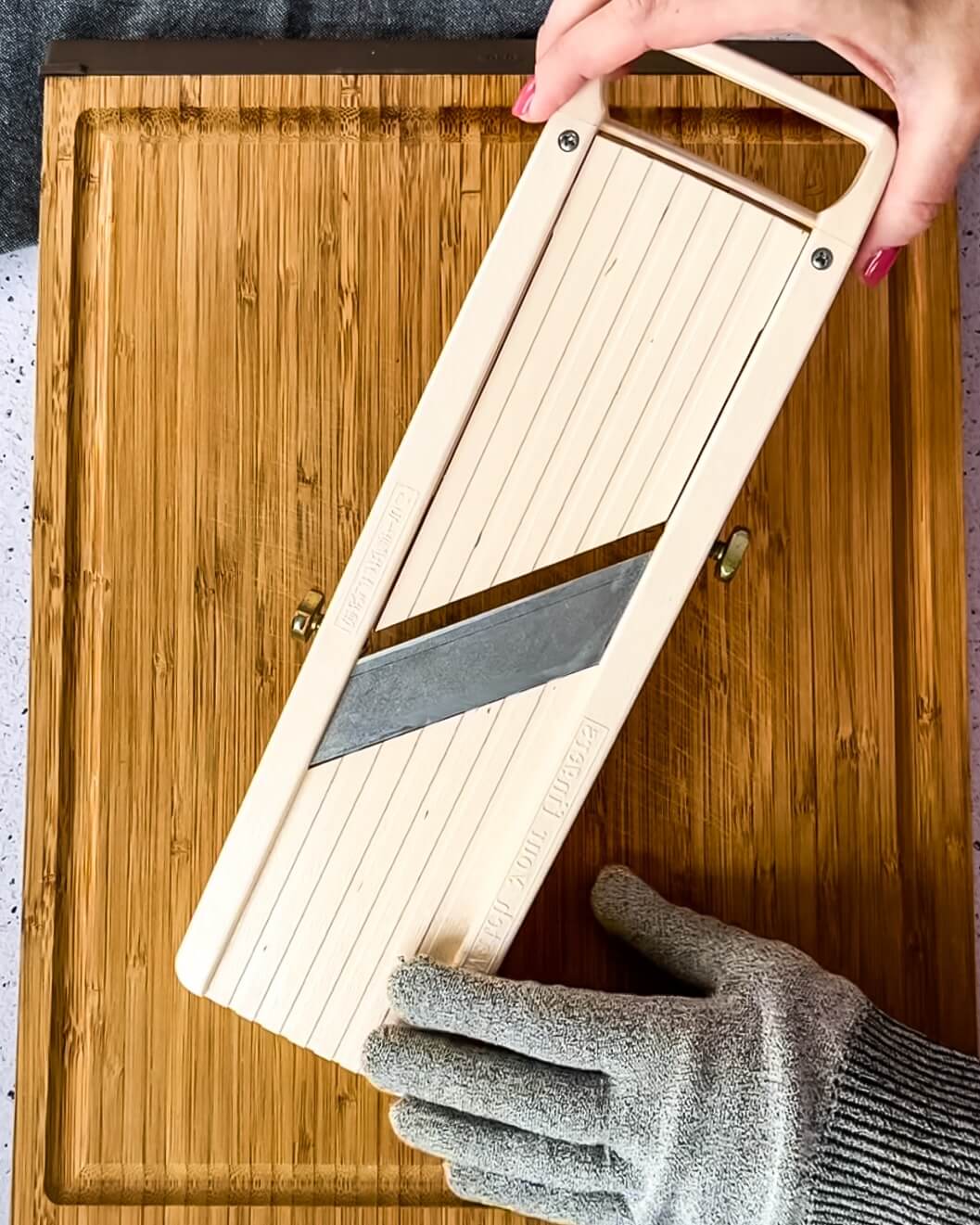
Japanese slicer Benriner brand.
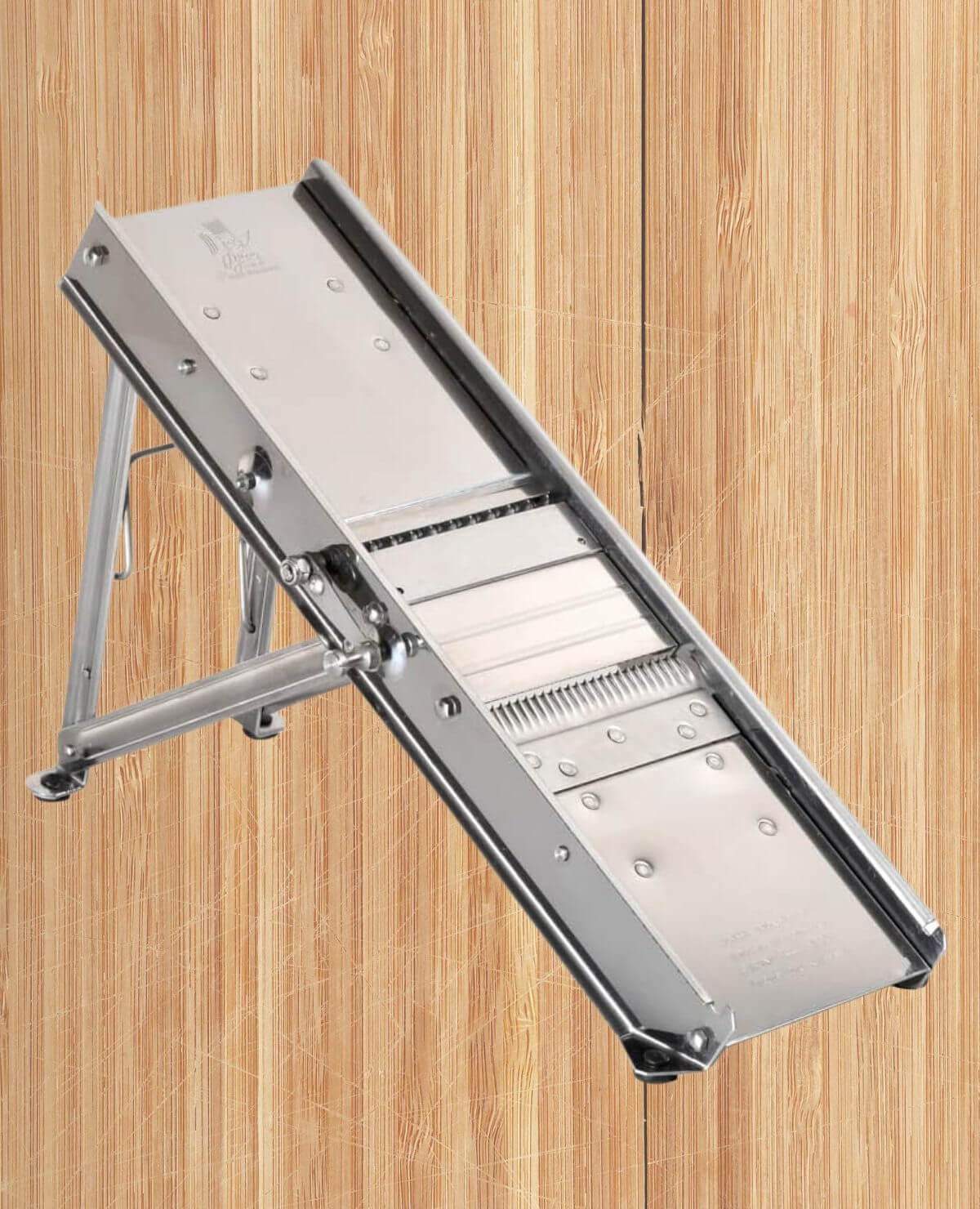
French mandoline Bron Coucke brand.
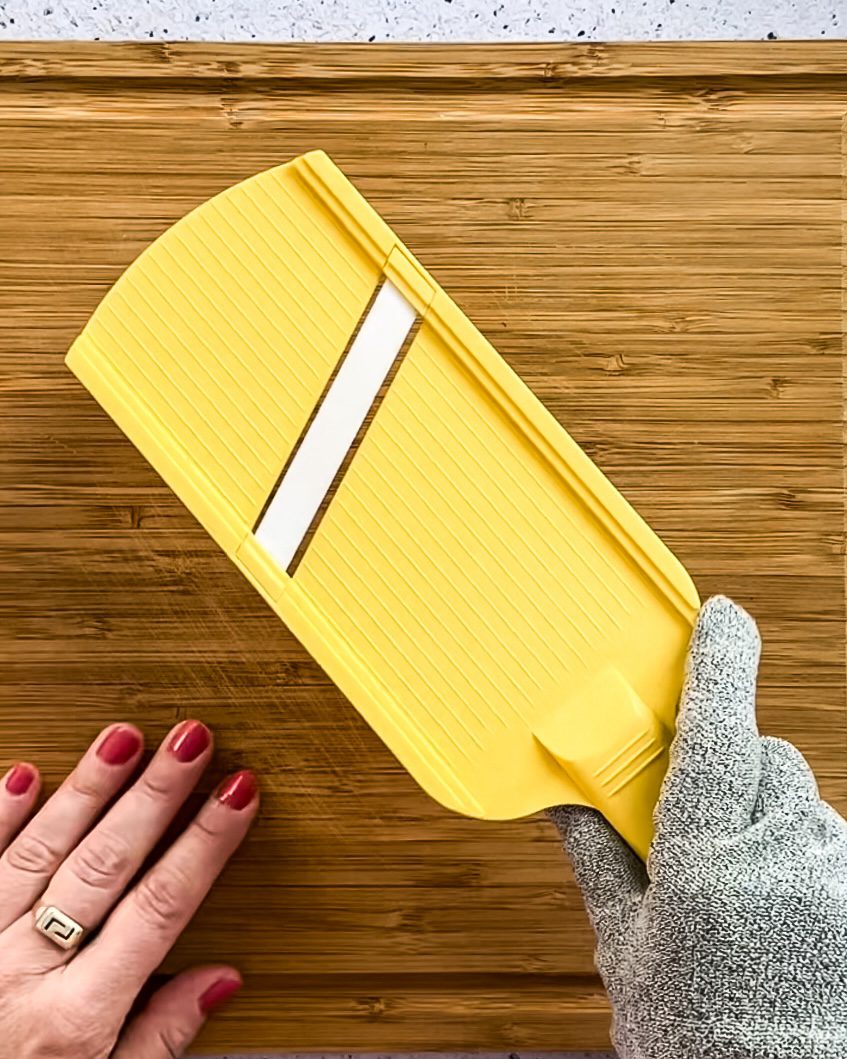
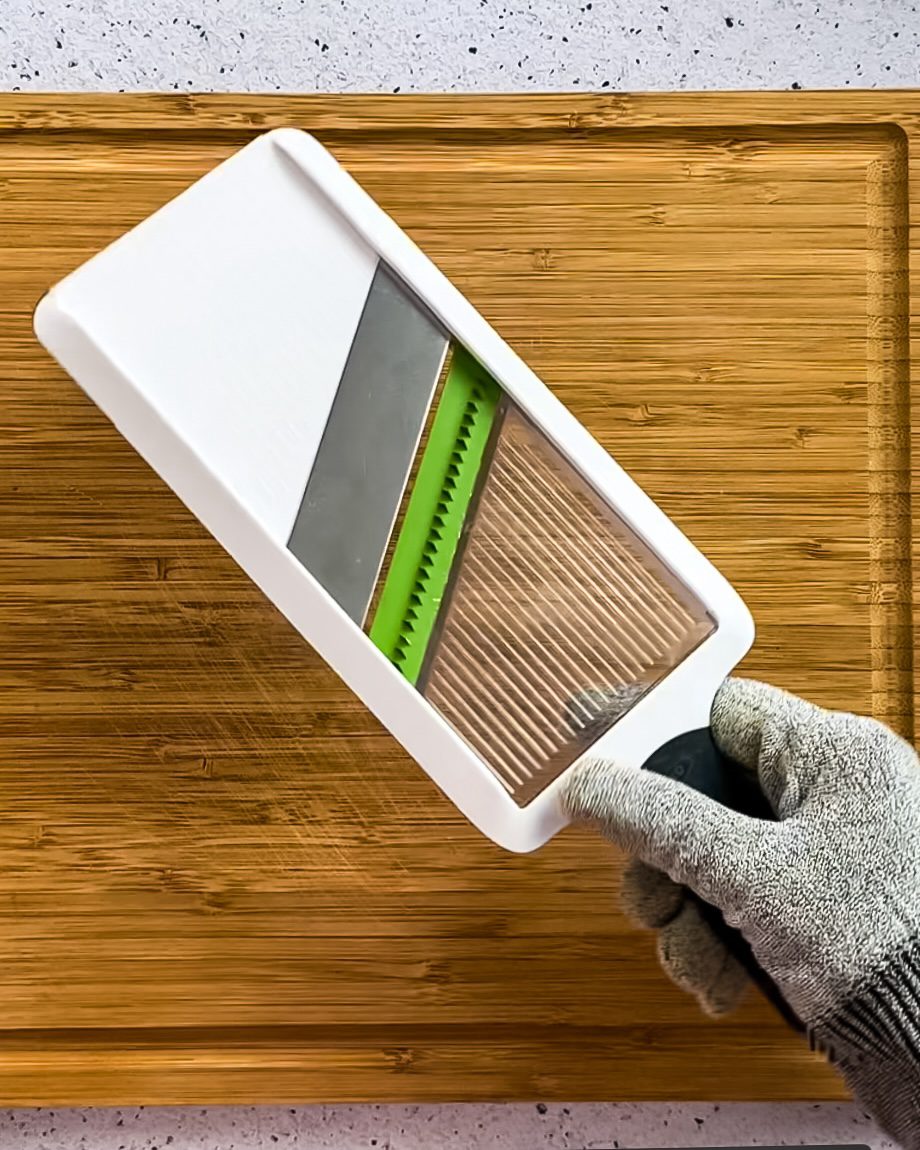
Are mandolins dangerous?
Mandonline slicers are a great tool and no less dangerous than a kitchen knife! There are guards and cut-proof gloves that help with the dangers of using a unique sharp tool too!
Mandolin slicers can be dangerous if not used correctly, but they do come with a safeguard (I highly recommend using this!). The guard protects your fingers from becoming part of whatever meal you are making!
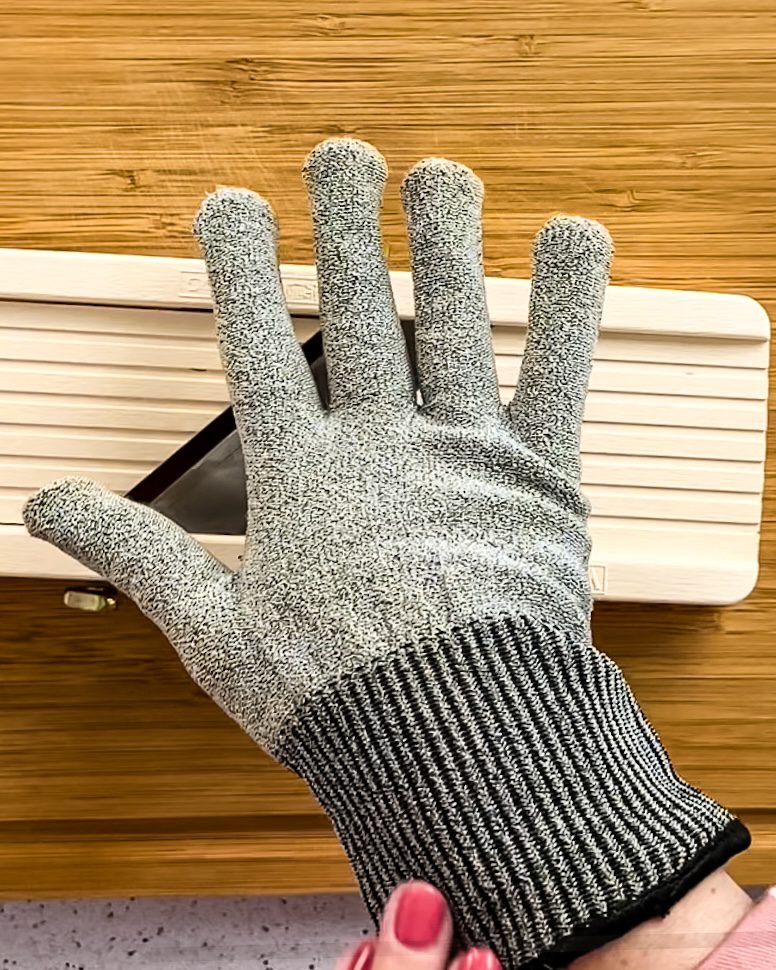
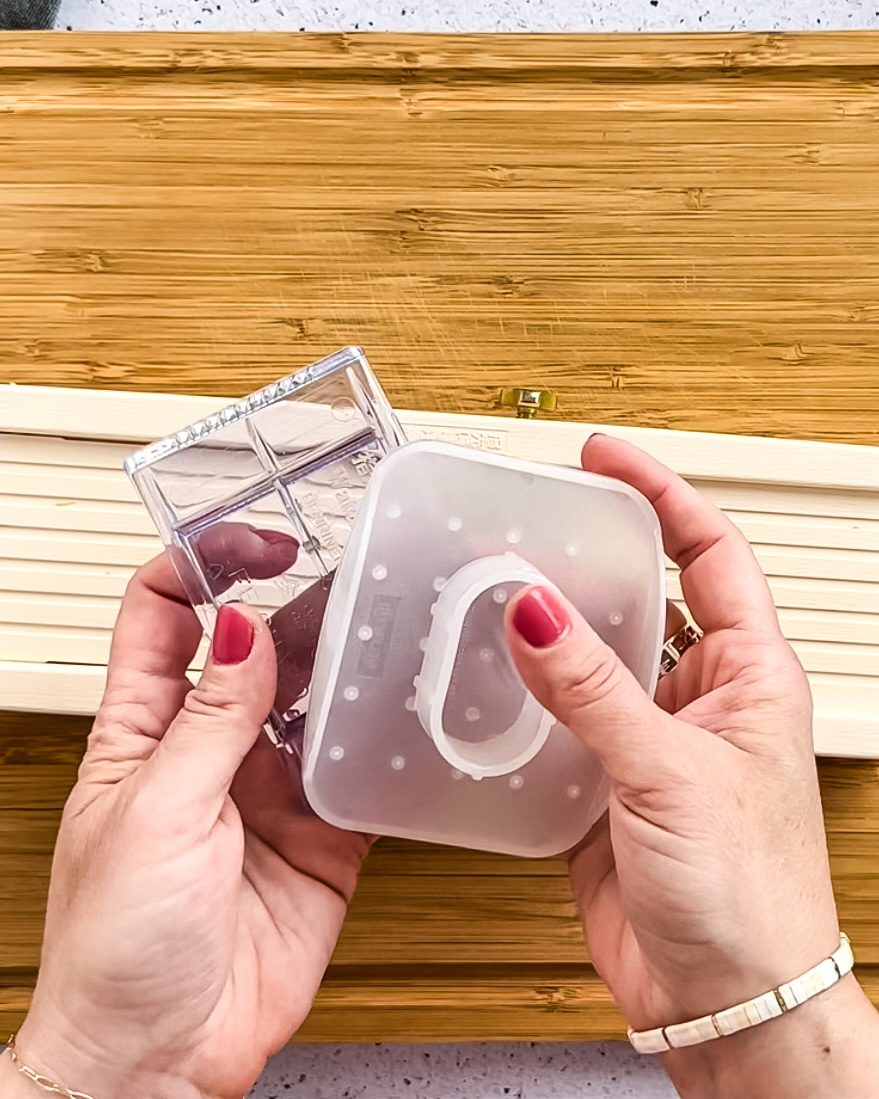
I also highly recommend using a cut-proof glove. I order them in several sizes so I have gloves for anyone who is going to cook in my kitchen! They are easily washed with soap and water. Just let them drip dry.
Back to any lurking danger–cleaning a mandolin is another possible area of risk to your fingers if you’re not careful.
Pro tip: Don’t leave it in the sink. Wash it immediately so that your attention is only on the mandoline. If you wash it immediately, you eliminate the risk of reaching into a filled sink and accidentally cutting yourself!
Know which direction the blade is set, and when using your sponge, wipe in the other direction!
You'll also want to store a mandoline in it's box, or even wrapped in a towel so when you reach for it in the cupboard or drawer, your fingers won't hit the blade.
Don't let this deter you from using a slicer, no need to be scared! As long as you know these tips, you will be just fine!
How to use a mandoline slicer
Let's get into how to use this device! It is such a great tool, but so important to use correctly and safely.
First, make sure the slicer is perpendicular to your body and the slant facing away from you. This allows you to have control of the tool. Additionally, slicing forwards and back is safer than doing it from side to side.
Before you start slicing, choose to use the guard or protective glove.
Position the food over the blade and begin slicing! Keep an even speed and pressure once you start moving the the food back and forth, and slice food as desired. You'll often have a little nubbin of fruit or veggie that doesn't get fully sliced–Just eat it!
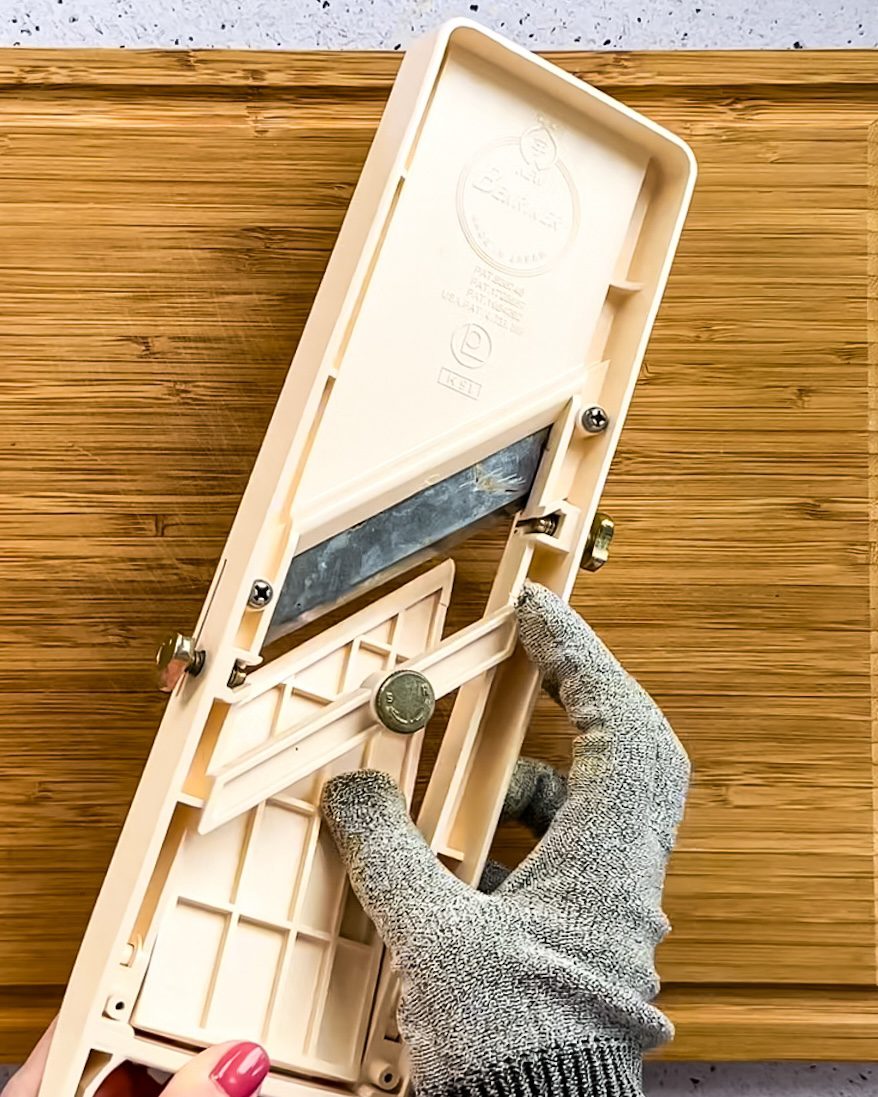
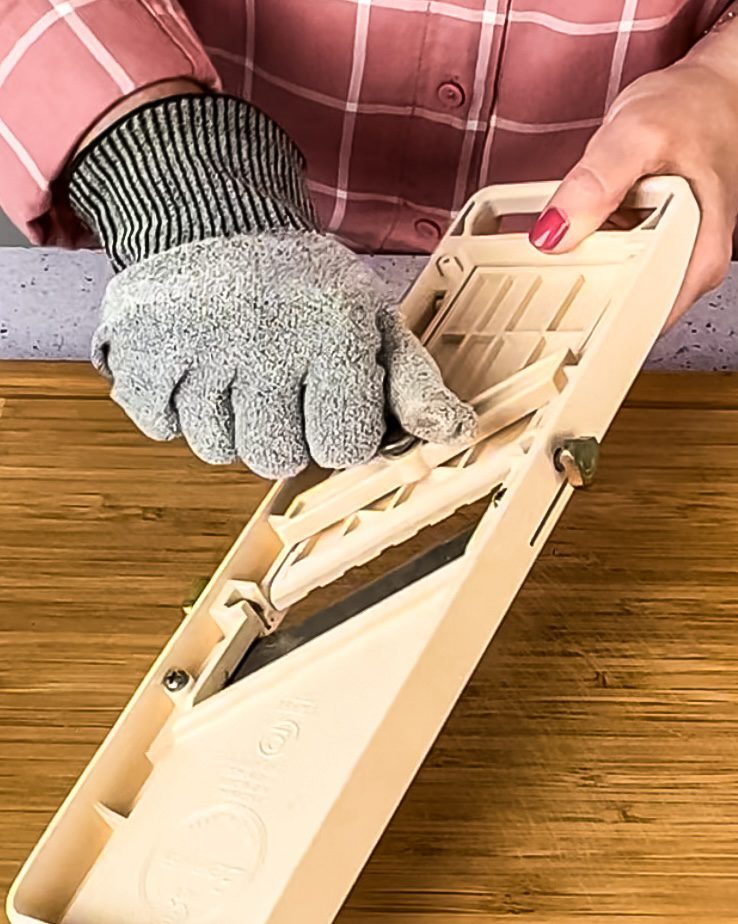
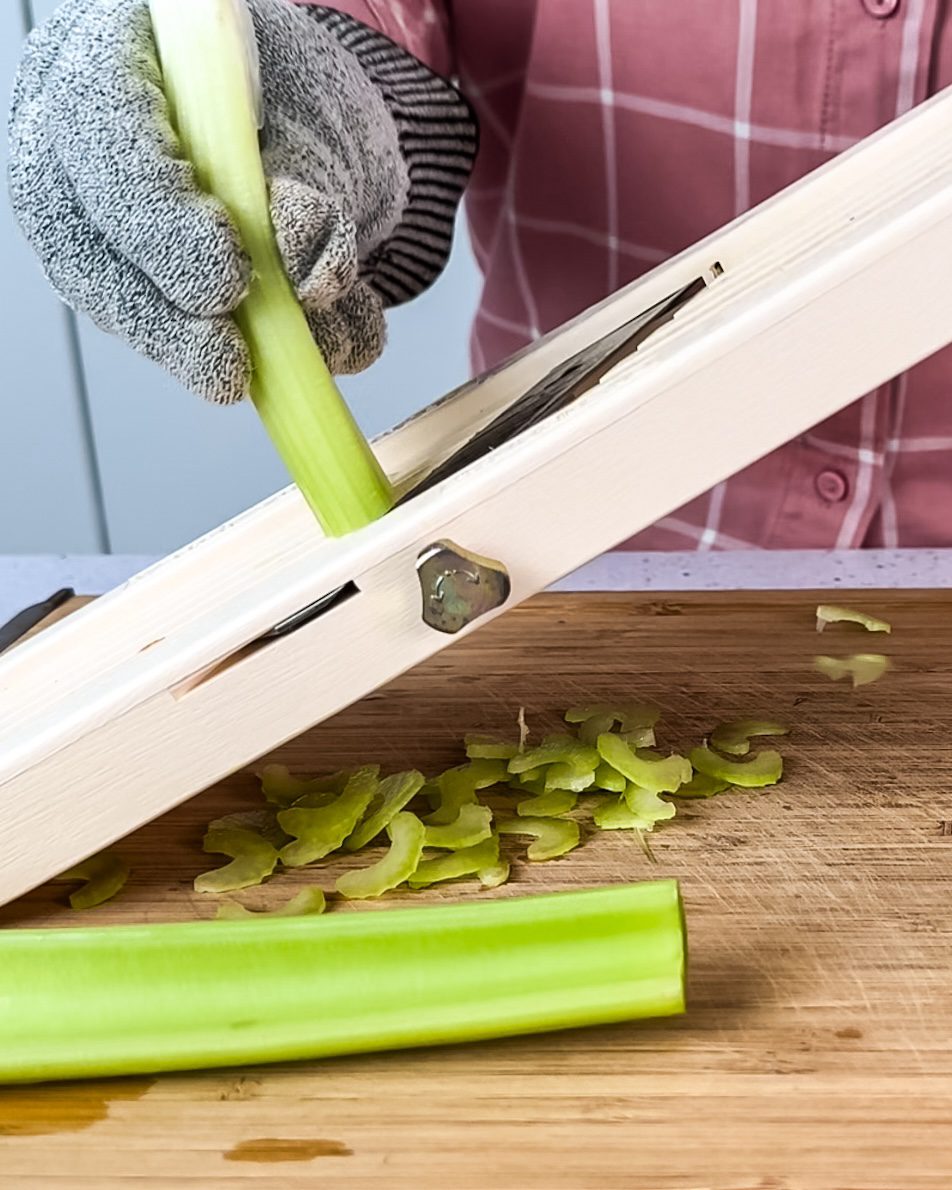

Extra tips: When slicing, keep your palm flat and fingers lifted (mostly while slicing long strips). Furthermore, keep your knuckles bent and fingers tucked in if slicing round pieces.
Watch Video
The best mandoline slicer
The best mandoline slicer is one that is in your price point, and will accomplish the tasks you want it for.
I like both adjustable mandoline slicers, and solid state slicers. Solid state slicers don't give you the option to make paper thin slices, but are fine for a good apple or pear galette, or potato gratin.
Adjustable slicers, such as a good quality Japanese or French mandoline, will be more pricy, but give you the ability to adjust the thickness of slices by minute amounts.
There are also more affordable mandolines that are adjustable to an extent, but only to their prescribed settings.
Pick your favorite from my recommended list:
- Classic French Mandolin all stainless steel.
- Benriner Japanese slicer, large size (The one I like and use).
- Standard adjustable slicer. A good mix between the two classics.
- Hand held slicer with thickness selector.
- Hand held Japanese slicer with ceramic blade. I love this brand!
- Find more options in my Knives and Sharp Things store!

Recipes to make using a mandoline
Any potato au gratin recipe, like my sweet potatoes au gratin or potato and carrot gratin, is a fantastic way to use this slicer. Potato gratin requires paper thin sliced potatoes, that only a mandoline can achieve!
Another recipe I love to make is shaved brussels sprouts salad. This light and delicate salad is perfect for using a mandoline to get the right texture.
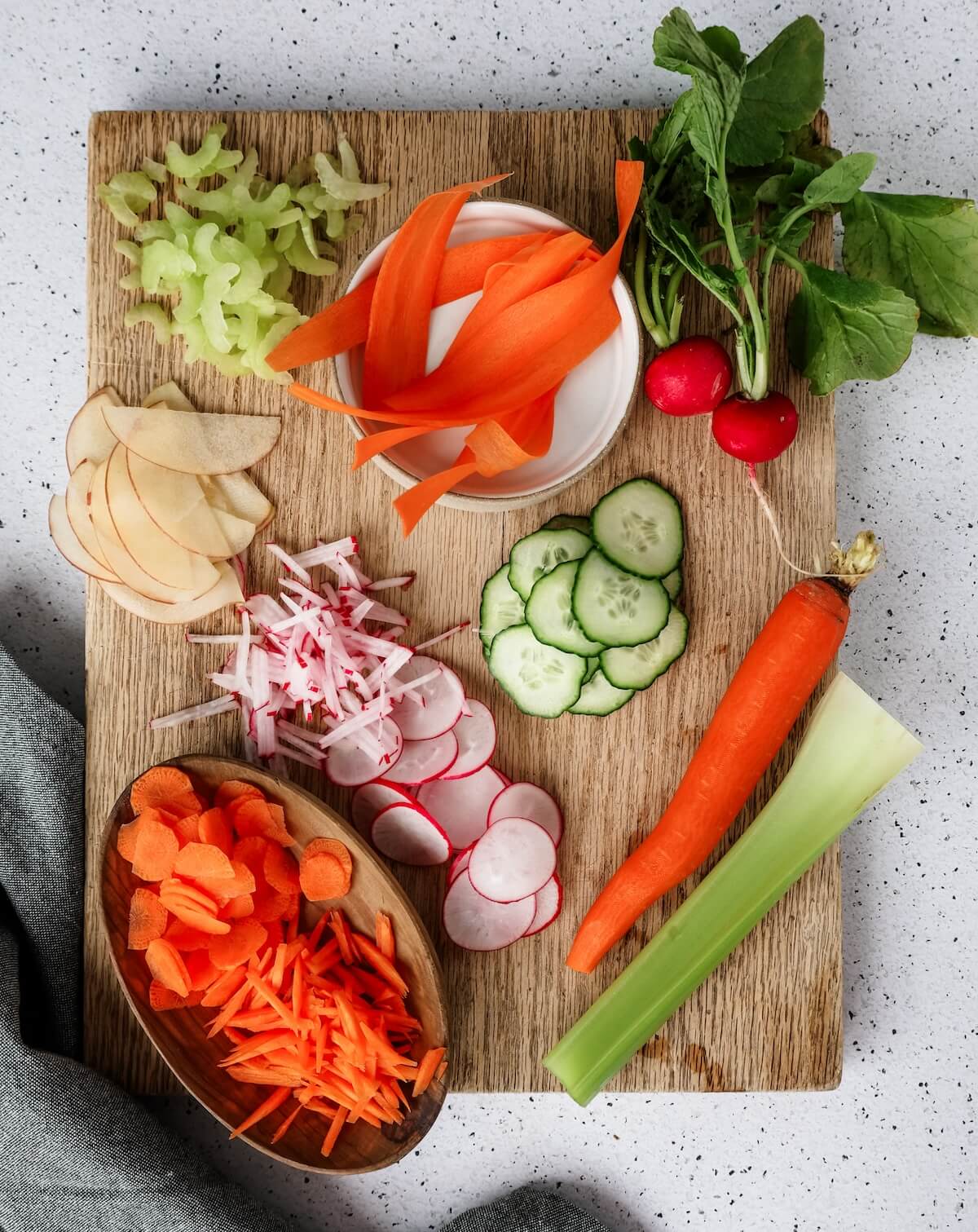
FAQ
Use a guard or protective glove. Trim or clean fruits or vegetables. Adjust mandoline to desired thickness. Slide food over blade moving away from your body or to the side for the best motion. Repeat movement until desired amount of food is sliced.
A cut-proof protective glove is the best way to protect your fingers and gives you more range of motion. You can also use a guard that pins the food under a plastic lid.
I prefer a glove because i have more control over smaller fruits and vegetables and can see what I'm doing!
The adjustable mandoline slicers can cut sturdy vegetables into paper thin slices that you can see through, all the way up to a ½-inch thick slices. An non-adjustable slicer typically cuts slices that are ⅛-inch thick or less.
A vegetable peeler is a decent substitute for a mandoline. Depending on the fruit or vegetable you need to slice, you can get long strips, or small shavings using a hand held vegetable peeler.
Recipes with slicing
Looking for other recipes that use mandolines? Try these:

Tara Teaspoon
I’ve been in food publishing for over 25 years, creating recipes & food-styling for magazines, books, television, food brands, & advertising. With two cookbooks under my belt and thousands of my recipes at your fingertips, I hope you'll be inspired to spend more time in the kitchen!

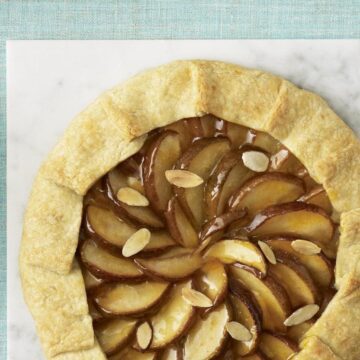

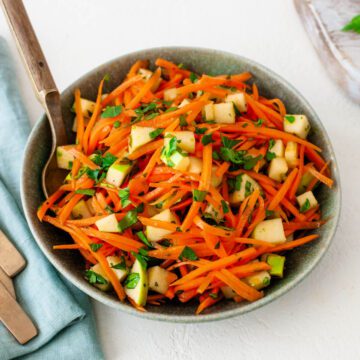



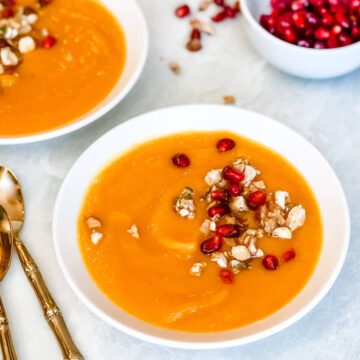

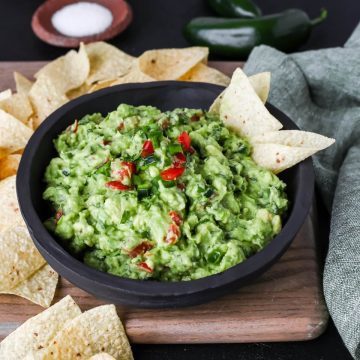
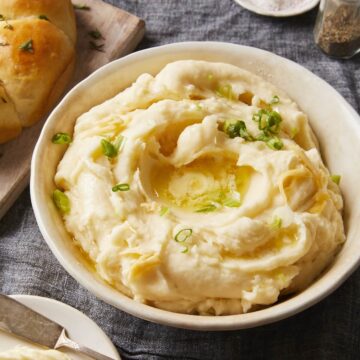
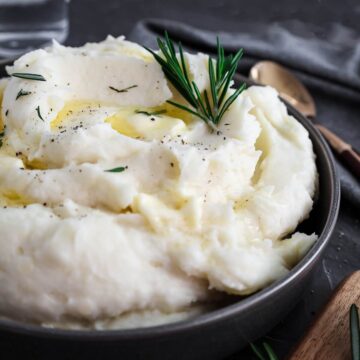

Julie says
Great information here. I've used a mandoline and always seem to slice off a nail or even part of my finger. AND I'm concentrating really hard on not cutting myself.
Getting that glove right away!